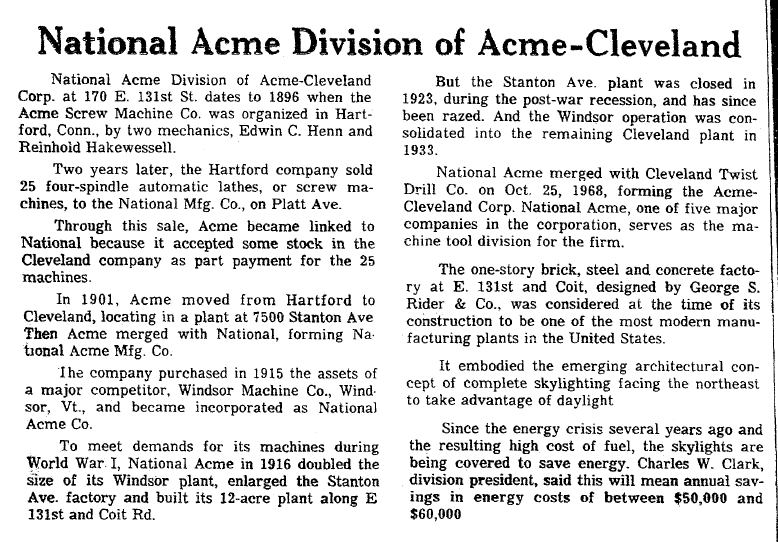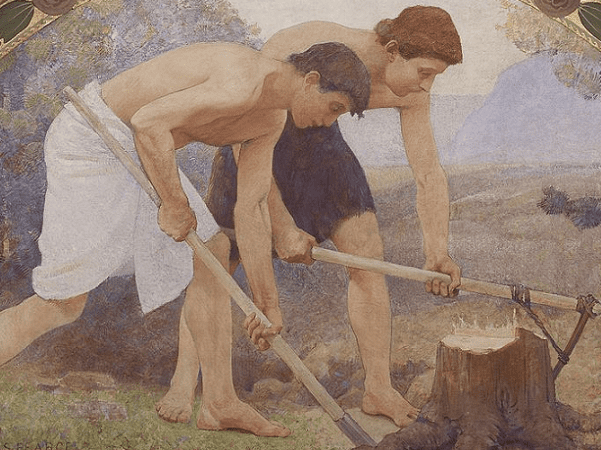Introduction: This Labor Day we’re thinking back to our hard-working ancestors, so many of whom came to the United States chasing the American Dream. Scott Phillips, a genealogical historian and owner of Onward To Our Past® genealogy services, shows how old newspapers can tell you a lot about your ancestors’ occupations and workplaces, and help you better understand their lives and the times in which they lived. These articles really add some wonderful depth and richness to your family story.
Everyone works. They say the only things you can’t avoid are death and taxes, but I’d have to add “working” to that list. And in our genealogy this is a good thing. Searching for information about our ancestors’ occupations and work can add significantly to our family trees. This is especially true when you work with the thousands of newspapers in GenealogyBank’s Historical Newspaper Archives.
We can gain some exciting and interesting insights into the lives of our ancestors when we add their occupations to our usual family research. As a matter of fact, my family tree is peppered with some wonderful discoveries that came as the result of researching the occupations and workplaces of my ancestors.
One of the aspects of my youth that I regret is that I neither paid close enough attention to, nor asked enough questions about, the work of several of my ancestors who are now gone.
Uncle Chuck
One example is my uncle Chuck. I remember from my youth and family stories that he worked for a company with the name of Acme-Cleveland, but not much more. So not long ago I decided to do some research to see if I could learn more about one of my favorite uncles.
When I searched on the company name “Acme Cleveland,” GenealogyBank’s search results page showed 2,600 hits. One of those results was this 1978 newspaper article which gave a detailed history of the company, explaining that its roots go all the way back to 1896. It also mentioned that the headquarters were at one time considered “to be one of the most modern manufacturing plants in the United States.” This is a fact I never knew when we would drive by and I would always shout in the car, as though my parents and sisters didn’t know: “That’s where Uncle Chuck works!” In the last paragraph of this old newspaper article they even quoted my uncle.

My Great-Great-Grandfather Frederick Evenden
In another instance, I decided to do some occupational research on my mother’s family. She lost her dad when she was only 12 so I didn’t have much to go on—but one of the stories my mother had shared was that her paternal grandfather, Frederick Evenden (1851-1918) had worked for a firm by the name of Chandler and Rudd. I began my newspaper search and soon found several advertisements for Chandler and Rudd published in an 1876 newspaper. It immediately sounded like a wonderful grocery store. Listed in the advertisements were enticing entries for cheese, nuts, fruit, etc. What a cornucopia of edible offerings!
Then I found this Chandler and Rudd advertisement in a 1907 newspaper for Easter week. It was fun to see they were offering some of the same Easter treats we can get today, such as Cream Easter Eggs, Marshmallow Eggs, and Chocolate Covered Almonds, plus some others I was unfamiliar with—like Sunshine Candies, Nut Puffs, and Chocolate Covered Fig Squares.
My Grandfather-in-Law Pasquale D’Aquila
On my wife’s side of the family we are blessed to have many family members who owed their livelihoods to the iron mining industry. My wife’s paternal grandfather, Pasquale D’Aquila, was one of those men who toiled away in the austere conditions of the open pit iron ore mines of Northern Minnesota. This was only after he had spent a few years in the mines of Minas Gerais, Brazil; then Western Canada; and then Montana. Sadly, Pasquale passed away long before I joined the family, so I did some newspaper research on what it was like in the mines in his day.
I first found this 1902 newspaper article. In addition to saying Hibbing, Minnesota, was “what is known in the expressive vernacular of the street as a ‘crackerjack,’” the article also stated: “Hibbing is at present the theater of greatest iron mining activity on the planet.”
But of course it wasn’t all “crackerjack”—the mining work was hard and dangerous, as were other types of work such as railroads and sawmills. This 1903 newspaper article reported that more than 1,000 “casualties among the working people of Minnesota” had occurred in the past year.
Sometimes it was dangerous just getting to work in the mines in those days, as reported in this 1911 newspaper article. The Scranton Mine was one of the mines Pasquale worked in, and the article explained an accident in detail—and reported that the men involved were John Lampi, Emil Jackson, and John Fari.
Here’s another mining accident, reported in this 1916 newspaper article. The Albany Mine was another mine in which Pasquale worked, and this article explained how a dozen railroad cars, each filled with 50 tons of ore, broke loose and wrecked in the mine.
This 1918 newspaper article reported another danger my ancestor faced: the scourge of Spanish influenza. This article explained that the area was under consideration for the imposition of martial law to combat the spread of this flu. The article detailed the situation in Grand Rapids, Gilbert, Hibbing, Aitkin, and Virginia, Minnesota, even listing an entire paragraph of the names of all those who died from the flu in Grand Rapids alone. No doubt, it had to have been a challenging life in a tough environment.
These many articles from the historical newspapers of GenealogyBank have added immensely to my family tree and my genealogy work. So when you get into your family history work, be sure to do some of your searching on the occupations and companies of your ancestors. These articles really add some wonderful depth and richness to your family tree!
Do you know what type of work your ancestors did for a living? Share their occupations with us in the comments.
Related Ancestor Occupation Research Articles:
